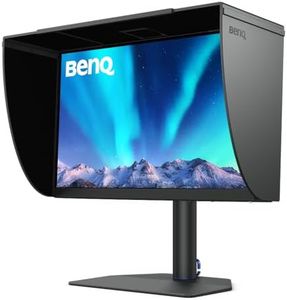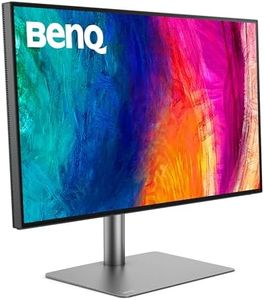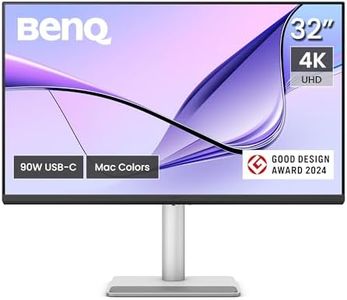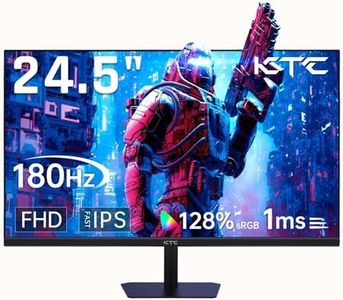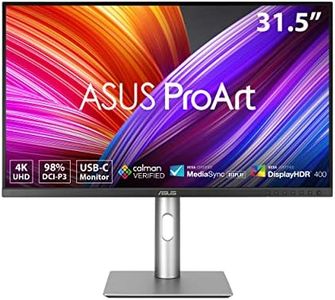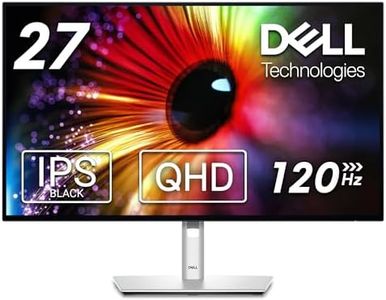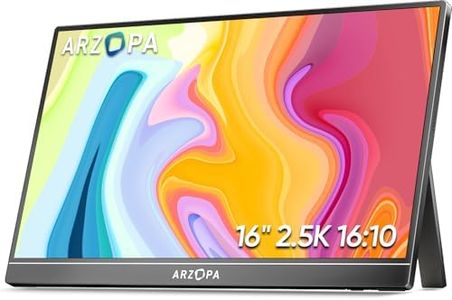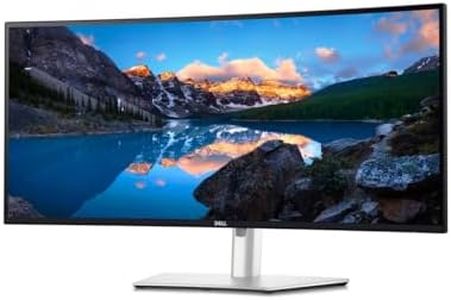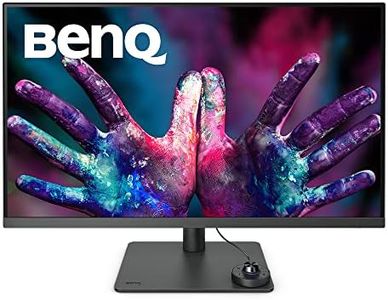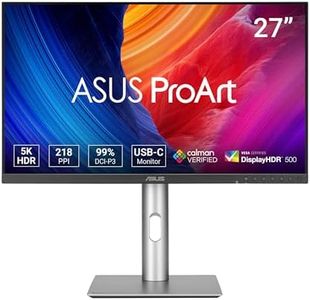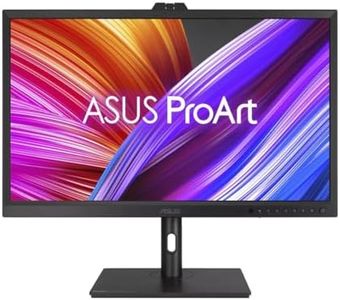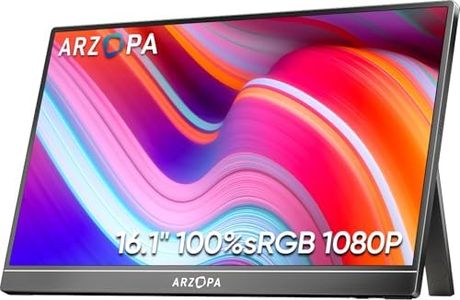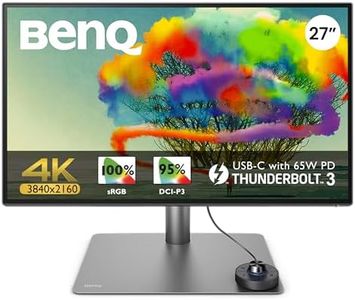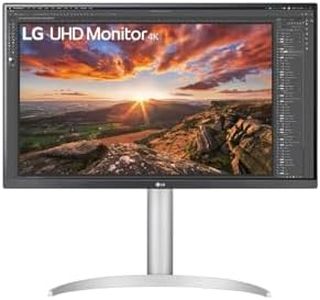We Use CookiesWe use cookies to enhance the security, performance,
functionality and for analytical and promotional activities. By continuing to browse this site you
are agreeing to our privacy policy
10 Best Color Accurate Monitor
From leading brands and best sellers available on the web.By clicking on a link to a third party's website, log data is shared with that third party.
Buying Guide for the Best Color Accurate Monitor
When choosing a color-accurate monitor, it's crucial to understand that not all monitors display colors in the same way. Color accuracy is vital for tasks like photo editing, graphic design, and video production, where what you see on the screen needs to match the real-world colors as closely as possible. The main point is to figure out your actual usage: if you're a professional who works with visuals, you'll need more stringent standards than a casual user. Start by considering your workflow, the type of work you do, and how critical perfect color reproduction is for you, then use the technical specs to guide your decision.Color Gamut (Coverage of sRGB, Adobe RGB, DCI-P3)Color gamut refers to the range of colors a monitor can show. It's usually expressed as a percentage of a standard set like sRGB, Adobe RGB, or DCI-P3. sRGB is the basic standard – good for web use; Adobe RGB is used in print media, and DCI-P3 is common for video. If your work is mainly online, a monitor with high sRGB coverage (close to 100%) is enough. For print or advanced editing, look for high Adobe RGB coverage. Video producers might want high DCI-P3 coverage. Choosing the right one depends on the type of media you work with most.
Factory Calibration and Calibration SupportFactory calibration means the manufacturer has pre-adjusted the monitor to display accurate colors out of the box. Some monitors also support hardware calibration, which lets you fine-tune color settings over time. If you need consistent and precise color (for example, in professional design), look for a monitor that is factory calibrated and offers calibration tools or compatibility with calibration devices. For less critical use, factory calibration alone might be enough.
Panel Type (IPS, VA, TN)The type of screen panel affects color accuracy and viewing angles. IPS panels are usually best for color work because they show consistent colors even when you look at the screen from the side. VA and TN panels are often less accurate and have more color shift. If color is a priority, choose an IPS panel, but if color isn't as important, VA or TN might offer better value in other areas.
Bit Depth (8-bit, 10-bit)Bit depth tells you how many shades of color the monitor can display. An 8-bit panel shows about 16.7 million colors, while a 10-bit panel can show over a billion. More shades mean smoother gradients and less banding, which matters in detailed image or video editing. If your projects require very subtle color differences, such as in professional photography or video, look for higher bit depth. For simpler tasks, 8-bit is sufficient.
UniformityUniformity refers to how even the brightness and color are across the whole screen. If parts of the screen look different, this can affect your editing. Some monitors have special features to ensure uniformity. If you are serious about photography or design, consider a monitor with good uniformity. For casual use, slight variations are less of an issue.
Resolution and Screen SizeResolution is how many pixels fit on the screen, and screen size is how big the monitor is. Higher resolution means more detail and space for tools or windows, which helps in editing high-resolution images or videos. A bigger screen makes it easier to spot color and detail issues. However, too high a resolution on a small screen might make text and icons very small, while a large screen at low resolution can look pixelated. Balance resolution and size based on how close you sit to the screen and how much detail you need.
